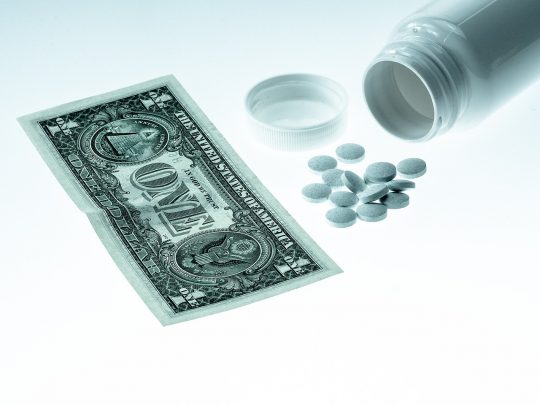How do we refute that the Catholic Church changed the way she baptizes from "In Jesus' Name" only to the Trinitarian formula?
I don't think you can refute it. As far as I know, all of the
evidence indicates that baptism was in the name of Jesus until the time
of Justin Martyr in the mid 2nd century when the Trinity doctrine was
invented. Whenever baptism is mentioned in the Bible, it is ALWAYS in
the name of Jesus. NONE of the writings of the early church fathers
prior to Justin Martyr around A.D. 150 taught Trinity baptism.
BRITANICA ENCYCLOPEDIA – Everywhere in the oldest sources it states that baptism took place in the name of Jesus Christ. Vol. 3, page 82.
As far as the Didache quote that someone posted, scholars are not in
agreement regarding the date of the Didache. It may not have been
written until after the Trinity doctrine was invented in the second
century. Even if it was written earlier, there is evidence that the
baptism passage was changed from Jesus only to the Trinity. In another
section of the Didache, on the Eucharist, it says a person must be
baptized "into the name of the Lord" to receive the Eucharist. I would
not consider the Didache to be reliable evidence of Trinity baptism in
the early church.
"But let no one eat or drink of your Thanksgiving (Eucharist), but they who have been baptized into the name of the Lord (Didache, Ch. 10)"
Is Matthew 28:19 evidence of Trinity baptism?
“according to a wide scholarly consensus, it is not an authentic saying of Jesus, not even an elaboration of a Jesus-saying on baptism." (The Anchor Bible Dictionary, Vol. 1, 1992, page 585)
“In place of the words "baptizing... Spirit" we should probably read simply "into my name," (Peake's Commentary on the Bible, 1929, page 723).”
“It has been customary to trace the institution of the practice (of
baptism) to the words of Christ recorded in Matthew 28:19. But the
authenticity of this passage has been challenged on historical as well
as on textual grounds. It must be acknowledged that the formula of the threefold name, which is here enjoined, does not appear to have been employed by the primitive Church, which, so far as our information goes, baptized 'in' or 'into the name of Jesus' (The Dictionary of the Bible, 1947, page 83)”
“Critical scholarship, on the whole, rejects the traditional
attribution of the tripartite baptismal formula to Jesus and regards it
as of later origin. (The Philosophy of the Church Fathers, Vol. 1, Harry Austryn Wolfson, 1964, pg 143)”
"It is often affirmed that the words in the name of the Father, and
of the Son, and of the Holy Ghost are not the ipsissima verba [exact
words] of Jesus, but...a later liturgical addition. (The Tyndale New Testament Commentaries, I, 275)"
"The testimony for the wide distribution of the simple
baptismal formula [in the Name of Jesus] down into the second century is
so overwhelming that even in Matthew 28:19, the Trinitarian formula was
later inserted. (Wilhelm Bousset, Kyrios Christianity, page 295)"
“the formal authenticity of Matt. 28:19 must be disputed (The Schaff-Herzog Encyclopedia of Religious Knowledge)”
“Matthew 28:19 in particular only canonizes a later
ecclesiastical situation, that its universalism is contrary to the facts
of early Christian history, and its Trinitarian formula (is) foreign to
the mouth of Jesus. (The International Standard Bible Encyclopedia, Vol. 4, page 2637, Baptism)”
Here's how the well respected church historian Eusebius quoted Matthew 28:19 in his writings before Constantine established the Trinity at the Council of Nicea:
"Whereas He, who conceived nothing human or mortal, see how truly he
speaks with the voice of God, saying in these very words to those
disciples of His, the poorest of the poor : ’Go forth, and make
disciples of all the nations.’ ‘But how,’ the disciples might reasonably
have answered the Master, ‘can we do it?’… But while the disciples of
Jesus were most likely either saying thus, or thinking thus, the Master
solved their difficulties, by the addition of one phrase, saying they
should triumph ‘IN MY NAME.’ For He did not bid them simply and indefinitely 'make disciples of all nations,' but with the necessary addition 'In My Name.'
And the power of His Name being so great, that the Apostle says: 'God
has given him a name which is above every name, that in the name of
Jesus every knee should bow, of things in heaven, and things in earth,
and things under the earth.' He shewed the virtue of the power in His
Name concealed from the crowd, when He said to His Disciples: 'Go, and make disciples of all nations in my name.'
Source - The Proof of the Gospel, Vol. 1, edited and translated by W.J. Ferrar, 1981, page 157
Why does Eusebius's quote matter? It matters because ALL
known manuscripts of Matthew prior to A.D. 325 when Constantine
established the Trinity doctrine are conveniently missing the last page,
the page that would have contained Matt 28:19. I don't know whether
they were burned to get rid of the original version, but what's known is
there is NO biblical evidence that Jesus taught Trinity baptism since
there aren't any other verses in the Bible that teach baptism in the
name of a Trinity. In fact, they teach the opposite, that baptism was
done in the name of Jesus.
There is also textual evidence against Matt 28:19. Which version do you think sounds authentic?
Matthew 28:18-19, Quoted by Eusebius in early 4th Century (A.D. 320)
Jesus said, “All authority … has been given to me. Therefore go and make disciples of all nations in my name…”
Matthew 28:18-19 (NIV), Current Version dated from late 4th Century (A.D. 390)
Jesus said, “All authority … has been given to me. Therefore go and make disciples of all nations, baptizing them in the name of the Father and of the Son and of the Holy Spirit…”
Why would Jesus, after announcing that all authority has been given
to him, then say that, because of his authority, his disciples should
baptize in someone else's name?
Don't think Matthew 28:19 could have been changed to support the new
Catholic Trinity teaching? Research 1John 5:7, the other verse used to
support the Trinity. The evidence is so overwhelming that it was added
to the Bible, that it has been removed from all modern non-Catholic
Bibles.
Unlike the modern Catholic Church, early Christians always
did everything in the name of Jesus, and NEVER in the name of a Trinity.
“God greatly exalted him and bestowed on him the name that is above every name, that at the name of Jesus every knee should bend, of those in heaven and on earth and under the earth, and every tongue confess that Jesus Christ is Lord, to the glory of God the Father. (Phillipians 2:9-11, NAB)”
“giving thanks always and for everything in the name of our Lord Jesus Christ to God the Father (Ephesians 5:20, NAB)”
“And whatever you do, in word or in deed, do everything in the name of the Lord Jesus, giving thanks to God the Father through him (Colossians 3:17, NAB)”
I think everything includes baptism.
*
St. Paul (Acts 19) commands
some disciples at Ephesus to be baptized in Christ's name: "They were
baptized in the name of the Lord Jesus*." In Acts 10, we
read that St. Peter ordered others to be baptized "in the name of the
Lord Jesus Christ". Those who were converted by Philip. (Acts 8) "were
baptized in the name of Jesus Christ", and above all we have the
explicit command of the Prince of the Apostles: "Be baptized every one
of you in the name of Jesus Christ, for the remission of your sins (Acts
2). Source -
newadvent.org/cathen/02258b.htm Catholic









